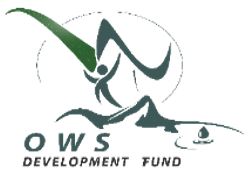

Protection is one of the thematic areas of engagement of OWS DF due to the recurrent occurrence of humanitarian crises and subsequent heightened protection risks to vulnerable communities in its operational locations. Therefore, to address the protection needs of the affected population, OWS-DF implemented various protection activities with the aim of preventing, mitigating, and responding to critical protection risks in its project locations. Among other things, the desired protection response results involve improving access and inclusion to crisis-related child protection services to children of concern for affected areas; improving access and inclusion to GBV prevention and response services for women and girls of concern; establishing strong community-based child protection and GBV prevention and response mechanisms established; and enhanced partnership and coordination among humanitarian agencies, government agencies, and other stakeholders in providing child protection and GBV prevention and response services. To materialize these main results OWS-DF undertook activities related to strengthening the Best Interest Procedures upon identification of the needs of affected children in collaboration with other key actors. Child-friendly spaces (CFS) are set up to allow children to engage in safe play and recreational activities intended to build their resilience and psychosocial well-being. Identification, Family tracing and reunification (FTR), and alternative care placement for separated and unaccompanied implemented with BOWCA. Case management training for the Bureau of Women and Children’s Affairs (BOWCA) social workforce was provided to support the response for people of concern. MHPSS needs of children and caregivers were identified and addressed through coordinated multisectoral and community-based MHPSS services (through child-friendly spaces, Women and Girls safe spaces, outreach to communities, and capacity building on psychological first aid to frontline workers). GBV referral pathways informed by service mapping findings were developed and strengthened for effective functionality. Community structures including the Persons with Specific Needs Association and Child Protection and Zonal Committees were established to enable community members to support persons with specific needs. Mass information and awareness-raising campaigns was conducted on GBV prevention, risk mitigation, and information on referral pathways for the response provided, including translated Somali versions. Community engagement and behavior change communication were crucial cross-sectoral interventions for demand creation and promotion of child protection behaviors and counseling on gender-based violence and harmful practices. In addition, OWS DF has been vital in combating widely performed traditional practices, including FGM and child marriage in the project location. All interventions were designed, implemented, and monitored through rights-based, community-based, and Age Gender Diversity (AGD) approaches.
OWS DF has reached more than 400,000 people with various protection activities over the past 20 years in Somali and SNNPR regions.
Stay informed about all the latest news and stories taking place right here at OWSDF. Don’t miss out on any updates!
OWSDF implements a huge diversity of programmes, designed to address specific causes of extreme poverty in communities across 2 regions
OWS Development Fund bridges traditional and modern development in remote, unreachable regions of Ethiopia since 1992
Regions
Woredas
Projects
Beneficiaries
